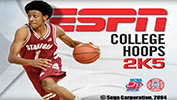| Albums |
| Screenshots |
| Videos |
| Communicate |
| Friends |
| Chalkboard |
The Official NCAA 14 Flexbone Offense Thread
This is a discussion on The Official NCAA 14 Flexbone Offense Thread within the EA Sports College Football and NCAA Football forums.
|
||||||
 | MLB The Show 24 Review: Another Solid Hit for the Series |
 | New Star GP Review: Old-School Arcade Fun |
 | Where Are Our College Basketball Video Game Rumors? |
| Search Forums |
| Advanced Forums Search |
| Search Blogs |
| Advanced Search |
| Go to Page... |

|
|
|
Thread Tools |
|
|
#1 |
|
Pro
|
The Official NCAA 14 Flexbone Offense Thread
All things involving the Flexbone Offense can be posted here. I am motivated and excited to be completely devoted the this offense in NCAA 14. Please post gameplay strategy, recruiting strategy, you name it. I know that a recruiting thread for this offense has already been created, but I felt it was best to have everything under one thread. I am quite foreign to this offense mainly due to being unable to execute this offense properly in previous NCAA games.
Let this thread be central hub of all things Flexbone! Last edited by volwalker; 07-09-2013 at 10:56 AM. |
|
|
| Advertisements - Register to remove | ||
|
|
|
|
#2 |
|
Rookie
|
Re: The Official NCAA 14 Flexbone Offense Thread
This is just an observation, but I think the flexbone is much more realistic this year. Both human and CPU. It feels better, has quicker reads, and looks more realistic.
Does anybody have any flexbone tips for me? |
|
|
|
|
#3 |
|
We had subs. It was crazy
|
Re: The Official NCAA 14 Flexbone Offense Thread
I put this in the recruiting thread but I think it serves as an intro here too. Here's a write up I did for my dynasty. I don't have NCAA14 yet but I would guess most of the same principles apply. This echoes most of the what the other guys were saying. I like to have a heady QB, one true WR (I call X), one TE/WR hybrid (I call Y), a strong B-Back, and quick A-Backs (I call one A and one Z). As with any offense, some of the terminology or position names may be different.
COACH’S CLINIC  Offensive Philosophy: The Flexbone wants to stretch the field both horizontally and vertically. The offense attacks the defense horizontally by having multiple ball carriers threaten the various zones of the defense (the famous “phases” of the option). The offense attacks the defense vertically by threatening the line of scrimmage with four vertical threats, the X, Y, A and Z. Our Y and Z are both hybrid positions that allow us to line up in any of our formations with the same personnel on the field. That way, the defense can never guess our formation or playcalling intentions based off of our huddle. Many people characterize this as a “running” or “triple option” offense, and while those are important parts of our offense, they are not the only parts. The Flexbone is a derivative of the Run-And-Shoot, and many of the passing concepts remain. We are not afraid to put the ball in the air. That being said, we won’t pass if we don’t have to. Q (Quarterback): You would think the first thing we look for in a quarterback would be speed, but it isn’t. The most important trait a Mechanicsburg quarterback can have is decision-making. Our offense runs at its best when our quarterback makes good decisions. The next question to be asked is can the quarterback move when he has to? He doesn’t need to be a speed merchant, but he needs to make the defense pay if he is ignored. Size wise, the quarterback does a good amount of inside running, so we want him to be big enough to be able to absorb a few hits. That being said, the quarterback that can make a quick decision and get vertical up field is exactly the type of guy we are looking for. X (Wide Receiver, Split End): The X is the closest thing we have to a true wide receiver in our offense. He is split out wide on the line of scrimmage in all of our formations, and he fulfills the role of a prototypical wide receiver. We want the X to be able to run routes and catch the football. Ideally, we look for large, possession type receivers that are also willing to block downfield. He also runs most of our downfield routes. For our deep passes, the element of surprise plays a large role. Y (Wide Receiver, Split End, Tight End): The Y is the first of our hybrid positions. The Y is responsible for both lining up wide as a split end and also being attached to the formation as a tight end. Because of this, we look for a very specific type of athlete to play the Y. He needs to be big, but he also needs to be able to run routes against the opponent’s secondary. It also allows us to get a big body out in space to act as a lead blocker on our outside running plays. A (A-Back, Slot Back, Wing Back, Running Back): Our A-Back is most like a Tailback in traditional offenses. On most of our option plays the A-Back will be the pitch man, so speed is the desired trait here. Size is not a necessity, as most of the A-Back’s running will be to the outside. The A-Back will also run routes, so being able to catch the football is a plus. He doesn’t have to be six feet tall or weigh two hundred pounds, but speed and acceleration are key. B (B-Back, Fullback): The B-Back is the bruiser in our offense. A majority of his runs are going to be quick-hitting dive plays that try to catch the defense on the wrong foot. Running between the tackles is the primary trait of the B-Back, and any additional speed to break long runs is a bonus. The B-Back rarely goes out for passes and is more likely to stay in for pass protection. That being said, in most Flexbone offenses the B-Back is actually the feature back and receives the most amount of carries. Z (A-Back, Slot Back, Slot Receiver, Wing Back, Super Back, Running Back): The Z-Back is the second of our hybrid positions. The prototypical Z-Back combines the traits of a good A-Back and Slot Receiver. This guy is the “slot ninja” in our offense. Speed and acceleration are valued over size and strength. In some formations he will line up like a wing and receive option pitches. Sometimes the Z will line up out farther as a flanker in the slot. Here the Z will run deep routes to make the defense cover the entire field. The Z-Back should be your player that is most dangerous with the ball in his hands, and moving him around lets you emphasize those talents. Offensive Line: What we look for in offensive linemen, no surprise, is speed and athleticism. Since we veer the end man on the line of scrimmage, it is more important for our linemen to be able to get to the second or third level rather than be a road grader. Obviously we look at run blocking over pass blocking, and we are able to recruit smaller and quicker linemen that other schools may have overlooked. |
|
|
|
|
#4 | ||||||||||||||||||||||||
|
Pro
|
Re: The Official NCAA 14 Flexbone Offense Thread
|
||||||||||||||||||||||||
|
|
|
|
#5 |
|
Pro
|
Re: The Official NCAA 14 Flexbone Offense Thread
The biggest thing I need to know about this offense is formation selection. I plan on using GT's playbook to get a feel for the offense, but when you watch them play the use the Flexbone Normal formation 80% of the time even though there are several more Flexbone formations to use. I am curious on how others go about this.
Also, the other question I have is related to position changes and player rating dropping because of it. Do any of you Flexbone guys worry about player's ratings taking a significant dive when you switch them around? Converting TEs to WR or a big HBs to FB would seem to hurt their overall value. Any advice on this would help. Thanks. |
|
|
| Advertisements - Register to remove | ||
|
|
|
|
#6 | ||||||||||||||||||||||||
|
Rookie
|
Re: The Official NCAA 14 Flexbone Offense Thread
For the conversion - I believe this is only an issue if you are simming games as that seems to rely heavily on OVR rating. I have done enough moving players in the past that I am not too worried about the lost rating on conversion. This is also mitigated by picking athletes to start with (HB/WR athlete for A backs, HB/RB athlete for QB, etc). The one with the largest negative is the TE>WR, but if you get a decent recieving TE he should do just fine at WR.
Slackarelli likes this.
__________________
Timeetyo Timeetyo's NCAA 14 Relegation & Violations System: http://www.operationsports.com/forum...on-system.html |
||||||||||||||||||||||||
|
|
|
|
#7 |
|
Pro
|
Re: The Official NCAA 14 Flexbone Offense Thread
When I play dynasty mode I always like to start out as an OC and earn better jobs down the road. Because of this I would usually use SuperSim but come to find out it doesn't work properly. Hopefully they fixed that in 14. The opponent's drives would barely take a minute. Anyway, thanks for easing my mind on the position change situation Timeetyo.
Could you explain a little further on how you recruit your QBs? I don't think I have heard of that strategy before. Last edited by volwalker; 07-09-2013 at 12:57 PM. |
|
|
|
|
#8 | ||||||||||||||||||||||||
|
Rookie
|
Re: The Official NCAA 14 Flexbone Offense Thread
For the QB, you want someone who could be either a competent QB or RB. This means you will look for both running skills (speed, accelaration, spin, juke, etc) as well as decent throw power & accuracy. Although this isn't always true, these players often make better run first option guys than recruiting for 'scrambling' QBs. I've noticed in past NCAA games that if recruiting a guy with the same stars and overall, the athlete is typically a bit faster but a bit less accurate than a similar scrambling QB - but this is a worthwhile tradeoff. And if you get a 5* one - he just breaks the game. My last one from '13 left after his junior season as 95 spd, 97 accel, 91 THP, 88 THA. It just wasn't even right for opposing defenses. 
SugaRicky and Slackarelli like this.
__________________
Timeetyo Timeetyo's NCAA 14 Relegation & Violations System: http://www.operationsports.com/forum...on-system.html |
||||||||||||||||||||||||
|
|
 |
«
Previous Thread
|
Next Thread
»
«
Operation Sports Forums
> Football
> EA Sports College Football and NCAA Football
»
|
|
All times are GMT -4. The time now is 03:32 AM.
|
Top -
|






